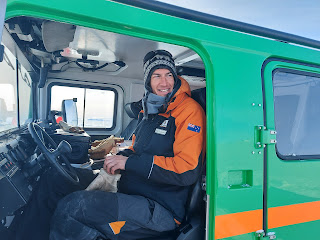Antarctica 2022 - Overview and Background
 These disc-shaped crystals of ice are created in ‘supercooled’ water and float upwards to form a layer with an open lattice-like structure that can be several metres thick. Platelet ice performs an important role as a protective environment for ice-associated algae and the developmental stages of Antarctic Silverfish - a keystone species of the Ross Sea. In this new project, we are seeking to understand the distribution of the platelet layer under the ice in the Southwestern Ross Sea, and how this will change as our climate shifts.
These disc-shaped crystals of ice are created in ‘supercooled’ water and float upwards to form a layer with an open lattice-like structure that can be several metres thick. Platelet ice performs an important role as a protective environment for ice-associated algae and the developmental stages of Antarctic Silverfish - a keystone species of the Ross Sea. In this new project, we are seeking to understand the distribution of the platelet layer under the ice in the Southwestern Ross Sea, and how this will change as our climate shifts.
Our team at NIWA, principally Dr Craig Stewart, have developed a
bespoke engineered solution known as the Sympagic Sampler. This is a huge drill that collects large cylinder-shaped samples of the ice while preserving its delicate structure. As ice samples are pulled up, the algae, bacteria and animal life between the platelets remain incorporated within the sampled structure.
These samples will allow us to study the role of platelet ice as a habitat and the conditions necessary for it to form. Any small shift in the environment will change where, when, and even if, the platelet ice forms. Such impacts could have major implications for the animals that need the ice to survive, with knock-on effects for the wider Ross Sea marine ecosystem.




Comments
Post a Comment